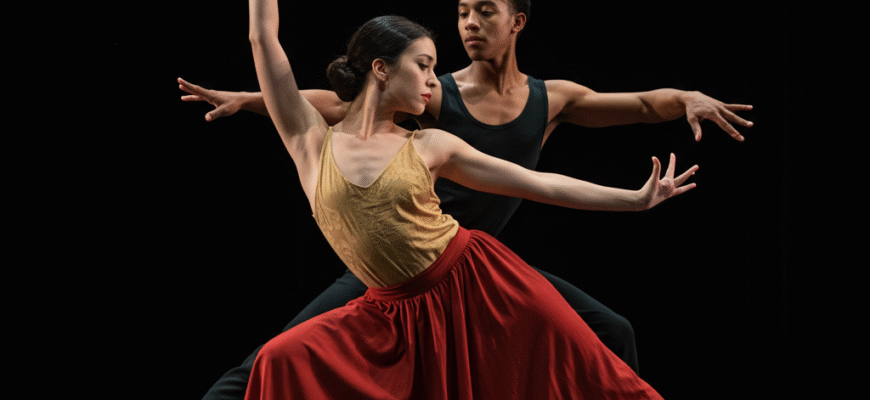Content
Echoes from Prehistory: The First Steps
Pinpointing the exact origin of dance is impossible, lost in the mists of prehistory. Yet, compelling clues suggest its ancient roots. Cave paintings dating back thousands of years, like those in Bhimbetka rock shelters in India or depictions in Egyptian tombs from millennia BCE, showcase figures in dynamic, dance-like poses. These weren’t just idle doodles; they likely captured vital aspects of early human life – hunting rituals designed to ensure success and appease animal spirits, fertility dances invoking the life-giving powers of nature, celebratory movements marking births, deaths, and rites of passage. In societies without written records, dance served as a living archive, transmitting myths, histories, and social values from one generation to the next. It was a communal act, strengthening group identity and coordinating collective action, perhaps even playing a role in courtship and warfare preparation.Archaeological evidence, including rock art and analysis of ancient settlement patterns, strongly suggests that communal dance played a significant role in the social and spiritual lives of prehistoric peoples. These movements were likely tied to seasonal cycles, hunting expeditions, and significant life events. The universality of rhythmic movement in human cultures points to a deep, possibly innate, connection between rhythm, motion, and social cohesion.Imagine early humans gathered around a fire, mimicking the movements of animals, stomping the earth to connect with its rhythms, or joining hands in circular formations that symbolized unity and the cycles of life. This wasn’t performance in the modern sense, but participation – a vital way of understanding and influencing the world around them.
Dance in the Ancient World: Ritual and Refinement
As civilizations rose along the Nile, the Tigris and Euphrates, and the shores of the Mediterranean, dance evolved, becoming more structured and integrated into religious and social institutions.Egypt: Divine Rhythms
In Ancient Egypt, dance was intrinsically linked to religion and royalty. Temple rituals featured trained dancers performing intricate movements to honor gods like Hathor, the goddess of music and dance. These weren’t spontaneous outbursts but carefully choreographed sequences believed to maintain cosmic order (Ma’at). Different dances served specific purposes: astronomical dances mirrored the movements of celestial bodies, funerary dances aided the deceased’s journey into the afterlife, and celebratory dances marked religious festivals. Reliefs and tomb paintings depict diverse dancers – priests, priestesses, professional entertainers, and ordinary people – often accompanied by musicians playing harps, lyres, flutes, and percussion. Dance was both a sacred duty and a form of sophisticated entertainment for the pharaohs and nobility.Greece: Harmony of Body and Soul
The Ancient Greeks held dance in high esteem, viewing it as essential for education, religious expression, military training, and theatrical performance. Plato himself advocated for dance, believing it cultivated physical grace and moral virtue. Greek mythology is replete with dancing figures, from the Muses to the wild Maenads accompanying Dionysus, the god of wine, ecstasy, and theatre. Religious festivals, particularly the Dionysian rites, involved ecstatic, trance-like dancing. In the theatre, the chorus moved and gestured in choreographed patterns, commenting on the dramatic action. Military dances like the Pyrrhic dance, performed in armor, honed agility, coordination, and group discipline. For the Greeks, dance was a holistic activity, harmonizing body, mind, and spirit.Rome: Spectacle and Suspicion
The Romans initially absorbed Greek attitudes towards dance, incorporating it into religious ceremonies and festivals like the Lupercalia. However, as the Republic transformed into the Empire, dance became increasingly associated with large-scale public spectacles and professional entertainers, often slaves or foreigners. While popular among the masses, particularly the sensual and pantomimic forms presented in theatres and arenas, dance was sometimes viewed with suspicion by the Roman elite, who considered excessive or overly expressive dancing to be undignified or morally dubious, especially for aristocratic citizens. Yet, it remained a feature of private banquets and public celebrations, albeit with a different emphasis than in Greece.The Middle Ages: Persistence Amidst Piety
The rise of Christianity in Europe brought complex attitudes towards dance. The Church hierarchy often condemned dancing, associating it with pagan rituals, loss of control, and sinful temptation. Ecclesiastical authorities frequently attempted to suppress folk dancing and secular celebrations. Despite this official disapproval, dance proved resilient. It survived and thrived in folk traditions, particularly in rural communities. People continued to dance at seasonal festivals (like May Day celebrations around the Maypole), weddings, and harvests. These were often simple, communal forms like circle dances (caroles) and line dances. Courtly life also saw the emergence of more refined, though still relatively simple, couple dances like the Estampie. Paradoxically, dance sometimes erupted in bizarre, uncontrolled forms, such as the ‘dancing manias’ or ‘St. Vitus’ Dance’ that swept through parts of Europe, perhaps stress-induced phenomena in challenging times.During the Medieval period, official religious doctrines often viewed bodily expression, including dance, with suspicion. However, popular culture and folk traditions maintained strong connections to dance for celebration and social bonding. This created a tension between institutional disapproval and grassroots practice that persisted for centuries.









